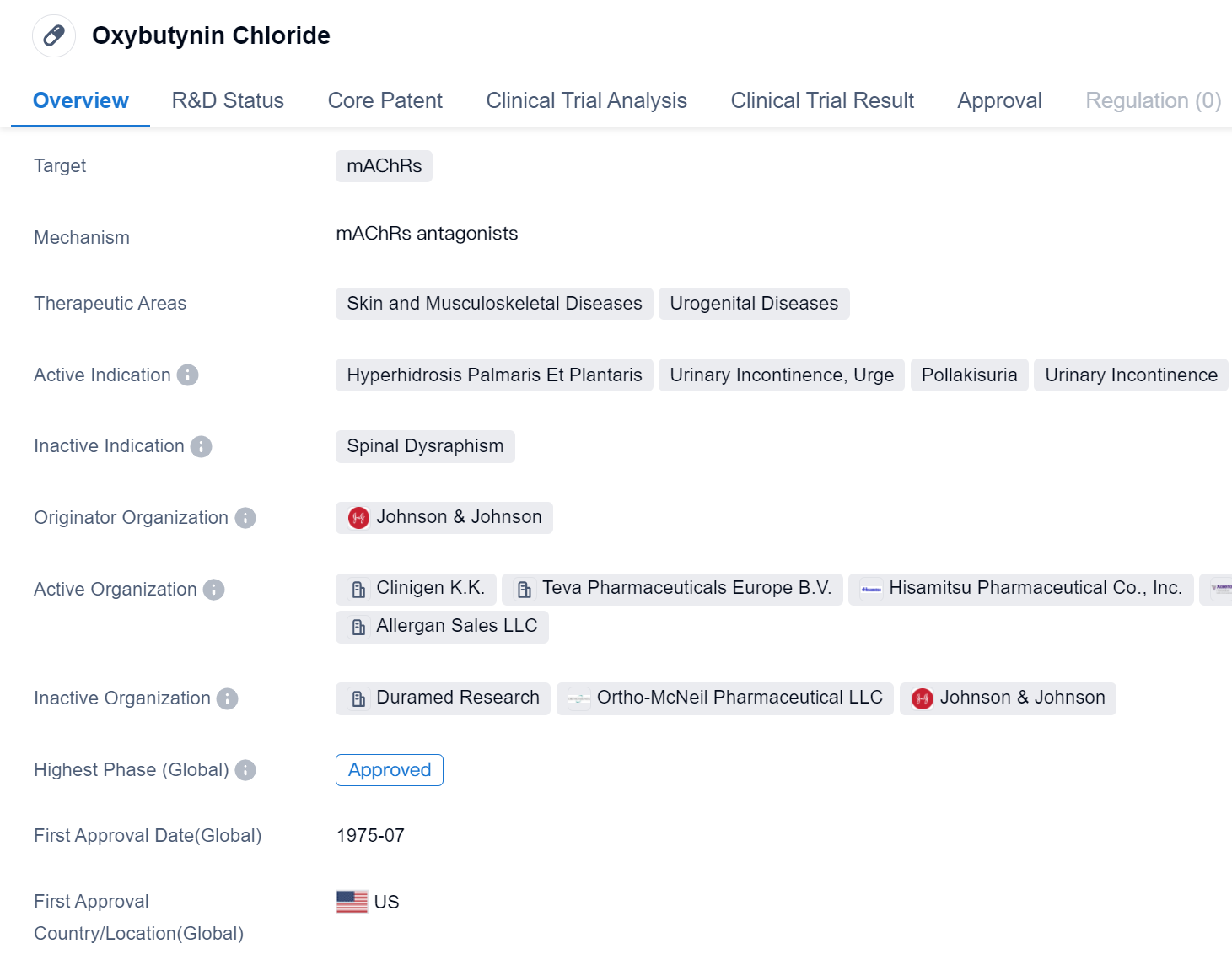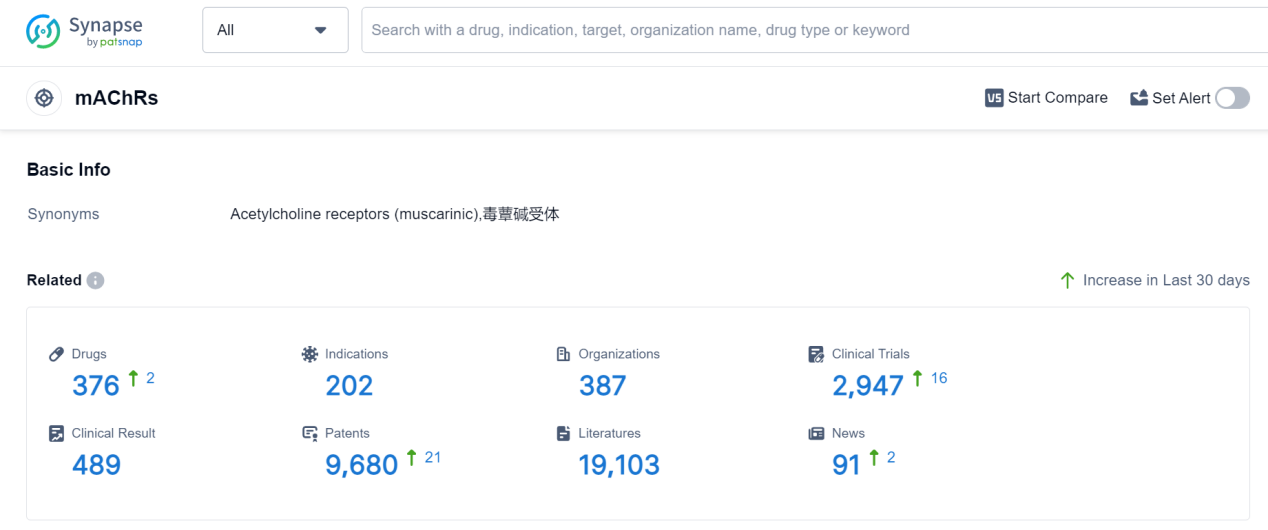Decoding Oxybutynin Chloride: A Comprehensive Study of its R&D Trends
Oxybutynin Chloride's R&D Progress
Oxybutynin Chloride is a small molecule drug that falls under the category of biomedicine. It primarily targets mAChRs (muscarinic acetylcholine receptors) and is used in the treatment of various conditions related to skin, musculoskeletal, and urogenital diseases.
The drug has been approved for the treatment of several indications, including Hyperhidrosis Palmaris Et Plantaris, which is characterized by excessive sweating of the palms and soles. It is also used for the management of urinary incontinence, specifically for urge incontinence, pollakisuria (frequent urination), urinary urgency, and overactive urinary bladder.
Oxybutynin Chloride was first approved in the United States in July 1975, making it a well-established drug in the market. The originator organization behind this drug is Johnson & Johnson, a renowned pharmaceutical company known for its contributions to the healthcare industry.
This drug has achieved the highest phase of approval globally, indicating its widespread acceptance and recognition in the medical community.
Oxybutynin Chloride is commonly prescribed to patients suffering from conditions related to excessive sweating and urinary incontinence. It works by blocking the action of acetylcholine on the mAChRs, thereby reducing the symptoms associated with these conditions.
The therapeutic areas of this drug, namely skin and musculoskeletal diseases, as well as urogenital diseases, encompass a wide range of medical conditions. This suggests that Oxybutynin Chloride has a broad spectrum of applications and can potentially benefit a significant number of patients.
👇Please click on the image below to directly access the latest data (R&D Status | Core Patent | Clinical Trial | Approval status in Global countries) of this drug.
Mechanism of Action for Oxybutynin Chloride: mAChRs antagonists
mAChRs antagonists refers to muscarinic acetylcholine receptor antagonists. Muscarinic acetylcholine receptors (mAChRs) are a type of receptor found in the central and peripheral nervous systems. They are activated by the neurotransmitter acetylcholine and play a role in various physiological processes.
Antagonists, in the context of mAChRs, are substances or drugs that bind to the receptor but do not activate it. Instead, they block or inhibit the normal binding of acetylcholine to the receptor. This results in a decrease in the activity of the receptor and its downstream signaling pathways.
mAChRs antagonists are commonly used in biomedical research and clinical practice. They can be used to study the function of mAChRs and their involvement in different diseases and conditions. In clinical settings, mAChRs antagonists are used for various therapeutic purposes. For example, they can be used to treat overactive bladder by reducing bladder muscle contractions mediated by mAChRs. They can also be used to manage symptoms of certain neurological disorders, such as Parkinson's disease, by modulating cholinergic neurotransmission.
Overall, mAChRs antagonists are important tools in both research and clinical settings for understanding the role of mAChRs and for developing therapeutic interventions targeting these receptors.
Drug Target R&D Trends for Oxybutynin Chloride
Muscarinic acetylcholine receptors (mAChRs) are a class of G-protein coupled receptors found in various tissues throughout the human body. They play a crucial role in mediating the effects of acetylcholine, a neurotransmitter involved in numerous physiological processes. mAChRs are involved in regulating heart rate, smooth muscle contraction, glandular secretion, and neuronal signaling in the central and peripheral nervous systems. Dysfunction of mAChRs has been implicated in various diseases, including Alzheimer's disease, Parkinson's disease, and asthma. Understanding the role of mAChRs is essential for developing targeted therapies that modulate their activity, potentially leading to improved treatments for these conditions.
According to Patsnap Synapse, as of 9 Sep 2023, there are a total of 376 mAChRs drugs worldwide, from 387 organizations, covering 202 indications, and conducting 2947 clinical trials.
👇Please click on the picture link below for free registration or log in directly if you have a freemium account, you can browse the latest research progress on drugs, indications, organizations, clinical trials, clinical results, and drug patents related to this target
Conclusion
In summary, Oxybutynin Chloride is a small molecule drug that targets mAChRs and is approved for the treatment of hyperhidrosis, urinary incontinence, and overactive bladder. It was first approved in the United States in 1975 and is developed by Johnson & Johnson. With its wide range of therapeutic areas and global acceptance, Oxybutynin Chloride continues to be a valuable drug in the pharmaceutical industry.






